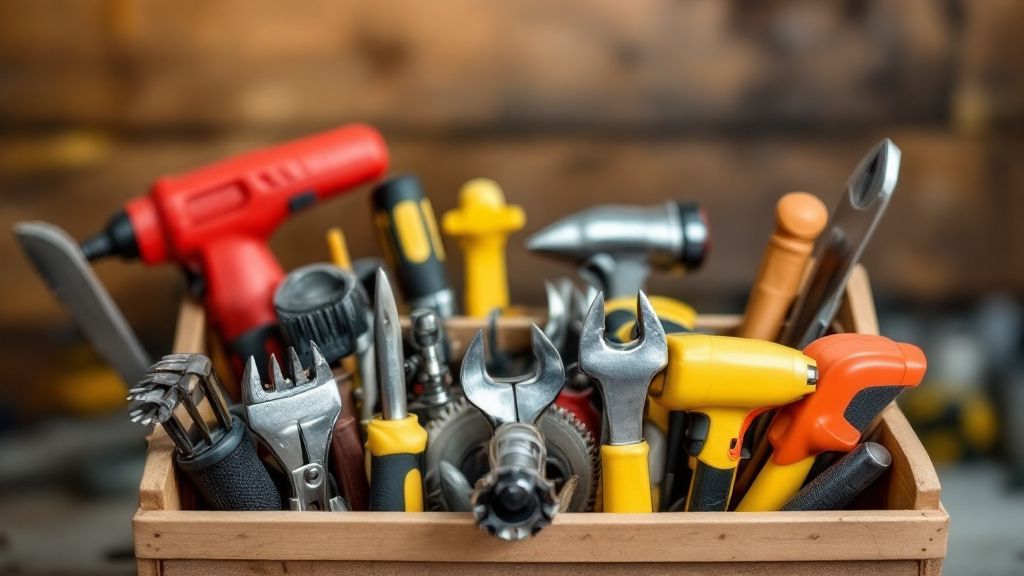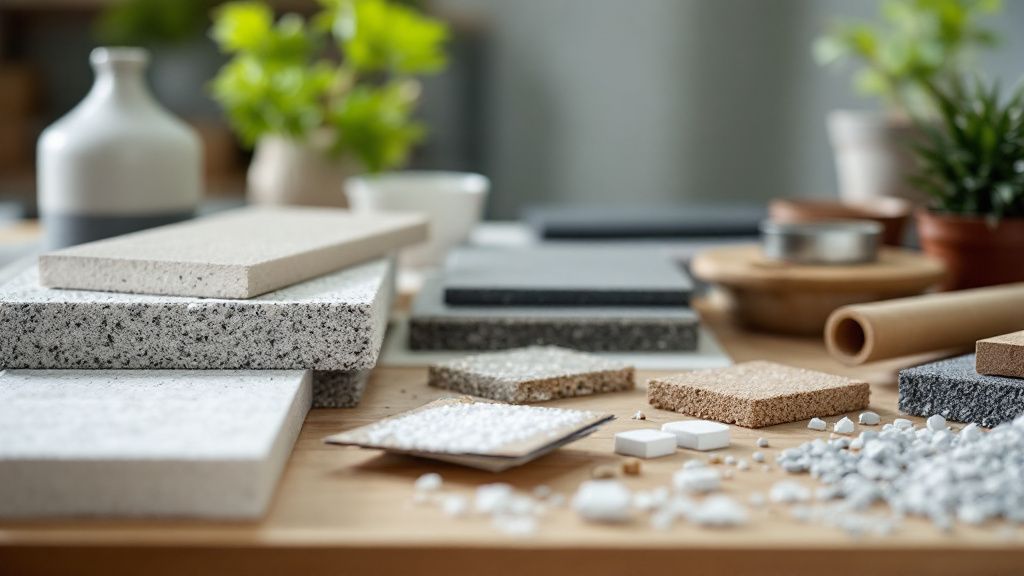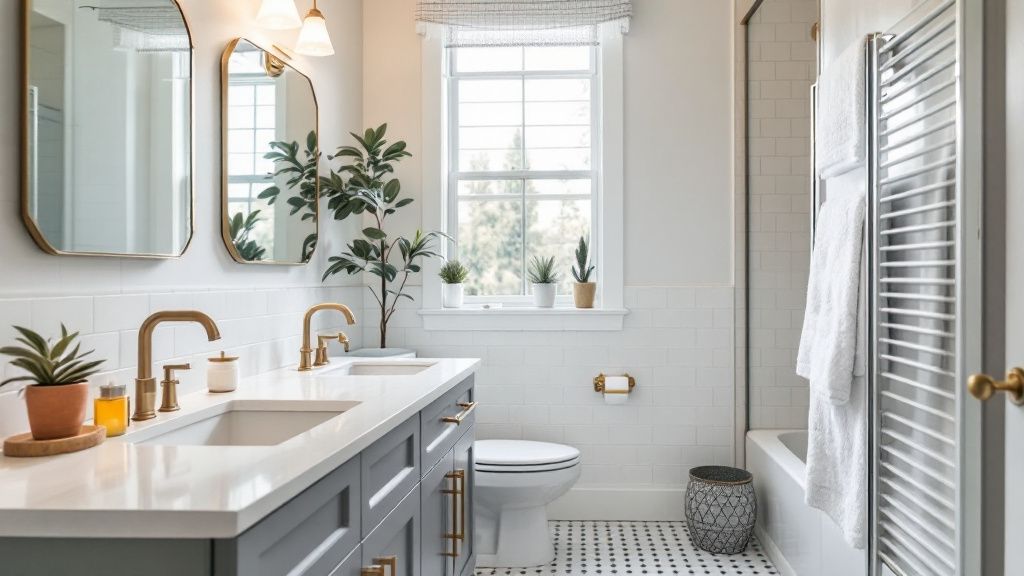Budget-Friendly Renovation Ideas to Upgrade Your Space
- Travis Andersen

- May 14
- 6 min read
Updated: May 16
Breathe new life into your living space with creative DIY renovation projects that combine affordability and style. Imagine turning a bland room into a cozy haven simply by adding a fresh coat of paint in a vibrant hue or installing open shelving to showcase your favorite decor pieces. Opt for eco-friendly materials like reclaimed wood to create unique furniture pieces that not only enhance the aesthetics but also contribute to home improvement. You can revamp outdated kitchen cabinets with modern hardware, giving it a sleek and updated look. Small changes, like updating light fixtures or adding a stylish backsplash, can make a significant impact on the overall feel of your home. With a little creativity and effort, you can transform your space with these easy and effective DIY home projects, ensuring your home renovation journey is both enjoyable and fulfilling.

Understanding Your Renovation Goals
Embarking on a home renovation journey starts with clearly defining your renovation goals. Determine what improvements are necessary and what could elevate your home's value or comfort. Whether you're seeking more space for a growing family or creating a modern look with updated features, understanding what you hope to achieve will guide your DIY home projects effectively.
The current state of home renovation shows an increasing trend towards sustainability and personalized spaces. Homeowners are increasingly opting for environmentally-friendly renovations, such as energy-efficient windows and solar panels, reflecting a shift in preferences. Identifying trends helps keep your renovation in line with current demands, potentially increasing your property's market value and appeal.
Assessing your budget and resources is crucial in setting realistic goals. Consider what you can accomplish yourself and when you might need professional assistance. DIY projects offer the opportunity to personalize your space while keeping costs down. By knowing your limits and priorities, you can strategically plan a renovation that enhances functionality and aesthetics without overextending your resources.

Essential Tools for DIY Renovation
Successful DIY home renovation starts with having the right tools. A reliable set of essential tools, such as a hammer, screwdrivers, and a power drill, forms the backbone of your renovation kit. These tools enable you to tackle projects like hanging drywall or assembling furniture, creating a solid foundation for your home improvement efforts.
On one hand, seasoned DIY enthusiasts argue that investing in high-quality tools ensures longevity and professional results, enhancing your renovation projects efficiently. On the other hand, beginners might find budget-friendly tools adequate for starting out, focusing more on learning techniques and gaining experience. This contrasting perspective highlights the importance of selecting tools based on your personal needs and skill level.
A few specialized tools can also be incredibly useful. Consider a tape measure for precise measurements and a level to ensure your projects are done perfectly. Safety gear, such as goggles and gloves, is crucial to protect yourself during renovations. Properly equipping yourself not only aids in the smooth progression of your projects but also fosters confidence as you undertake each DIY task with ease.

Safety Precautions for DIY Projects
Prioritizing safety is paramount when embarking on any DIY home renovation project. Always wear appropriate protective gear, including safety goggles, gloves, and work boots, to prevent injuries. Adequate ventilation is crucial, especially when working with paints or adhesives that emit fumes. Clearing your workspace of any hazards can further minimize risks, ensuring a secure environment as you navigate through your DIY home projects.
Before starting any project, familiarize yourself with the tools and materials you plan to use. Understanding their operation can prevent accidents and enhance your efficiency. In the next few years, advancements in smart technology are likely to introduce safety devices, making DIY home improvement projects even safer and more accessible for enthusiasts. Keeping abreast of these innovations could significantly influence your approach to renovations.
Always adhere to building codes and local regulations. These standards ensure not only the safety but also the legality of your renovation endeavors. Checking for potential hazards, such as electrical wires or plumbing, is essential before beginning demolition or construction. By incorporating these safety precautions, you lay the groundwork for a successful and hazard-free renovation journey.

Choosing the Right Materials for Your Project
Selecting the appropriate materials is a crucial step in your home renovation project. Each choice, from flooring to paint, affects the functionality and aesthetic appeal of your space. Materials should align with your vision, ensuring harmony in design and practicality. Quality materials may come at a higher price, but they offer durability and longevity, minimizing future maintenance needs and enhancing the overall success of your DIY home projects.
Consider the environment where each material will be used. Kitchens and bathrooms, for example, require moisture-resistant materials to prevent damage. What most people don’t see about choosing materials is the intricate behind-the-scenes detail: the research and quality checks that make all the difference in ensuring a durable and lasting renovation outcome. This attention to detail ensures your choices meet both aesthetic and durability standards.
Look into sustainable options such as bamboo or reclaimed wood, which are not only environmentally friendly but also add character to your space. By choosing sustainable materials, you contribute positively to the environment while achieving a unique look. With careful selection, your materials will support an efficient and visually appealing renovation, aligning with both contemporary trends and personal preferences.

DIY Renovation Ideas for Every Room
Revamping every room in your home can be an exciting yet challenging task. Begin in the living room by introducing a focal point, such as a statement wall with bold wallpaper or a gallery of framed art. This simple touch can change the overall mood and make the space more inviting. For some, adding open shelving filled with books and plants can significantly enhance the room's appeal.
Transform the kitchen by updating cabinet hardware and re-tiling the backsplash for a fresh new look. For example, subway tiles in a herringbone pattern can give the kitchen a modern, sophisticated edge. Painting the cabinetry in contrasting colors for the uppers and lowers is another trendy approach that can be achieved with minimal cost and effort, yet with maximum impact.
In the bedroom, creating a cozy atmosphere is crucial. Incorporating layered textiles like throws and cushions adds warmth and style. Consider a DIY headboard crafted from reclaimed wood or fabric to inject personality into your space. These projects not only increase comfort but also allow you to showcase your creativity and add a personal touch.
Bathrooms are often overlooked but can be transformed through small updates. Replace outdated fixtures with modern designs and add a fresh coat of paint in neutral tones to make the room feel larger. Adding open shelving and decorative storage solutions can also enhance both functionality and aesthetic, turning the bathroom into a practical yet serene retreat.
For children’s rooms, let imagination run free with bright colors and fun elements like a painted chalkboard wall. Personalizing the space with their favorite themes can make it a fun haven for play and relaxation. These DIY home projects allow you to nurture creativity as you master the art of home renovation across various rooms in your home.

Bathroom Renovation on a Budget
Renovating your bathroom on a budget doesn't have to mean compromising on style or quality. Start by focusing on areas that make a big impact, such as changing outdated faucets and fixtures. A small investment in new hardware can modernize the space instantly. Consider repainting walls and ceilings in light, airy colors to make the room feel larger and more inviting without a costly overhaul.
Refreshing the bathroom's look can also be achieved by updating the vanity. Instead of replacing it completely, repaint your existing unit and add new handles or knobs for a fresh appearance. One unpopular opinion about bathroom renovation, particularly for those on a budget, is that less is more—sometimes, a minimalistic approach can lead to a cleaner and more serene environment without the clutter of excessive decor.
Replacing old shower curtains and bathmats is another budget-friendly method to breathe new life into the space. Opt for textiles in trendy patterns or colors to keep the area vibrant. You might also consider adding a few strategically placed mirrors to reflect light and create a feeling of more space. These simple updates contribute to an overall polished and cohesive design.
Tile can be expensive, but you don't have to tile the entire bathroom to make it stand out. Focus on high-impact areas like the floor or a shower accent wall. Peel-and-stick tiles offer a cost-effective alternative that allows for creative flexibility. This DIY home project provides the texture and depth of traditional tiles at a fraction of the cost.
Experiment with lighting to add ambiance and functionality. Swapping outdated light fixtures for more contemporary options can revolutionize the mood without breaking the bank. Installing energy-efficient LED lights will not only reduce cost but also enhance illumination, transforming your bathroom into a stylish and practical oasis through savvy budgeting and thoughtful choices.



Comments